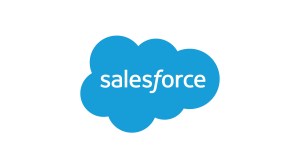Data-Driven Marketing: How to Spend Less and Deliver More



What is data-driven marketing, and what can it do for your business? Read our guide to using data to lower costs and wow your customers.

Salesforce
Data-driven marketing can help businesses of all sizes drive engagement, maximise ROI and get the most out of their resources.
Using data to inform your marketing decisions also helps you avoid wasting your marketing budget on creating impressions that won’t convert. Ultimately, data-driven marketing means targeting the right audience at the right time with the right message.
But while data can be every business’s most valuable resource, today’s customer is becoming more and more unpredictable. According to the latest State of the Connected Customer report:
The average customer uses nine different channels when they communicate with businesses
- 68% of customers have bought a product in a new way over the last two years
- 71% of customers switched brands at least once in the past year
In other words, it’s becoming increasingly challenging for businesses of all sizes to truly know their customers. The ironic part? Seventy-three percent of customers expect companies to understand their unique needs and expectations.
To meet these evolving expectations, you need precise control of your data. However, turning data into actionable information can be a difficult process. This is your guide on how to use your data to create a better roadmap towards your customer — and deliver the experiences they deserve.
Let’s look at the concept of real-time marketing and show some ways leading brands use it to win customers.
What is data-driven marketing?
Data-driven marketing is a way to use customer information to craft personal messaging and deliver better customer experiences. By having the right insights, you can anticipate the needs of your customer and deliver the right messaging and offers at the right time.
For example, imagine that you run a dog grooming business. Your data shows that the customers in one area don’t have a lot of disposable income and are likely to be sensitive to price. Your marketing message for this area could be tailored to focus on cost as your differentiator.
Meanwhile, the residents in another part of town could have higher household incomes, and be more concerned with bespoke service for their furry friends. Your marketing message for this area could be tailored to focus on your award-winning service or eco-friendly products.
If you were to ignore the data you have on the relative income for each area, you’d probably struggle with engagement. But by using data to address your audience’s priorities, you’ll see higher click-through rates and more conversions. That’s the power of targeted data — and why so many businesses are now writing data-driven success stories.
The benefits of data-driven marketing
It’s important to let go of hunches and gut feelings when it comes to marketing today. By letting your data lead you to your customer, you’ll discover a range of benefits. Some of these include:
- Targeting well-defined audience segments and offering tailored communications means a higher conversion rate. In fact, 72% of customers only engage with brands that offer personalised communications.
- Improved customer experience and trust. More than 60% of consumers are comfortable with companies using relevant personal information in a transparent and beneficial manner.
- Increased ROI. A lower marketing spend and more personal engagement means that you can expect a better return on your investment, as well as increased lifetime customer value.
- Improved campaign performance. Real-time campaign data allows you to keep up with customers’ evolving expectations.
Learn how to deliver success now with Data Cloud for Marketing. Create real time moments for every customer.



5 tips for creating a data-driven marketing strategy for your growing business
1. Identify clear objectives for your data
Data is most effective when it’s powering a strategy. For example, you may want to use your data to drive ad impressions, increase your website conversion rate or lower your cost-per-click. Once you have clear goals in place, you’ll have a better understanding of how you can use your data to reach those goals.
But don’t just identify use cases — look at how you can create a more data-driven culture. According to Tableau research, 74% of employees say they’re more likely to stay with a company that provides them with the data skills they need.
2. Remove information silos and centralise your data
Without a single view of your customer, it can be hard to have the full picture of their needs. Centralising your data management will eliminate rogue data that could present an incorrect picture of your audience. Dismantling departmental silos and uniting disparate data storehouses can also improve trust in your organisation’s data. This lets your marketing team create more effective strategies based on reliable information, rather than assumptions.
3. Make sure that your channels match your audience
Your data will tell you where your audience likes to spend their time. Do they spend a lot of time on Instagram? What kind of ads do they respond to? Do they use self-service? Do they look at reviews?
Your data can help you look beyond marketing KPIs and get a more holistic view of your customer’s lifestyle. You can then adjust your strategy and offer an omnichannel experience to engage them more effectively.
Create efficiencies and focus on ROI with omni-channel intelligence.


4. Place ads more efficiently and reduce your marketing spend
Automation for programmatic marketing and ad buying can help maximise your marketing spend. By using granular data to automatically buy and sell digital ad space, you can create hyper-targeted ad campaigns that have high impact and provide maximum ROI.
5. Leverage artificial intelligence (AI) to personalise individual channel experiences.
AI is not just the future — it’s already here. In fact, the State of Marketing report shows that more than 62% of marketing organisations are already using AI. Additionally, 70% of high-performing marketing teams have a clearly defined AI strategy.
If you’re not already using AI, you may be asking your marketing team to do some unnecessary heavy lifting. You may also be using valuable marketing resources creating impressions that are unlikely to convert.
Build a toolkit for delivering better insights and turbocharging your marketing strategy
Once you have a good idea about how you want to use your data, you can make sure that you have the right tools for the job.
Tableau makes data visual, with customisable dashboards that allow you to view and share deep analytical insights. In order to act on those insights, you can use Marketing Cloud to create personalised journeys and track campaigns. And if you want to skill up the workforce to learn new digital skills, then check out Trailhead, an on-demand learning platform where you can create personalised learning journeys.
To see more about how you can manage your data to connect with the customer, download the CRM Handbook. And to take Marketing Cloud for a spin, check out the demo.
Join us at Salesforce World Tour Essentials Asia and learn how Salesforce Customer 360 can help to unlock the value of your customer data. Register now
This post originally appeared on the U.K. version of the Salesforce blog.



















